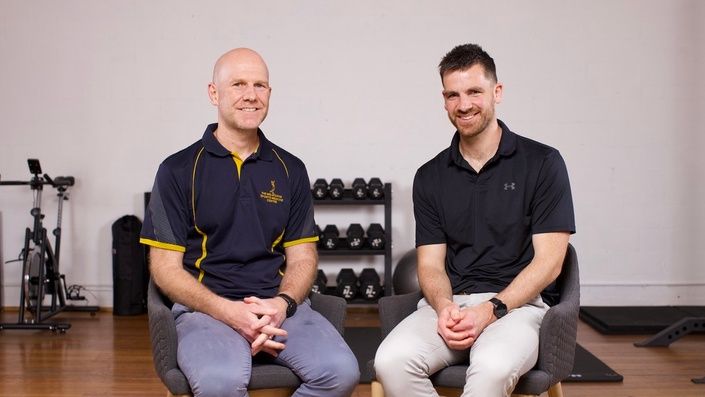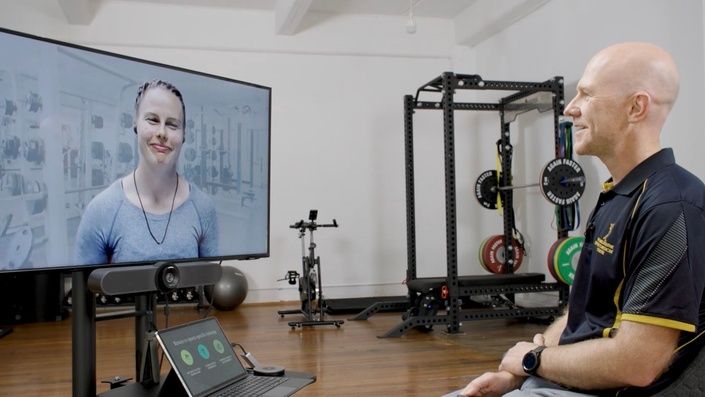Welcome back to the 6th instalment of Mick's 2 cents blog!
If you missed my first five blogs you, you can read them here.
In the latest Podcast, Randall sat down and talked shop with Sports Chiropractor Luke Nelson.
For those that don’t know Luke, Luke is a Melbourne-based Sports Chiropractor and the President of Sports Chiro Australia.
He is extremely passionate about running, and translation of research into practice; so naturally Luke’s topic of choice for he and Randall to discuss was a recent paper titled “Moving Beyond Weekly "Distance": Optimizing Quantification of Training Load in Runners” by Paquette and colleagues (2020).
The full text paper can be found here:
Like in all of Randall’s podcasts, there was plenty of thought provoking discussion, but as always I want to cut straight to the chase and focus on a key message from this paper that extends beyond running athletes and into other sports that use “distance” as a metric to guide rehab, training and performance.

Speak to most runners about their training and how they’re preparing for an event, and they will often discuss how much “mileage” they’re doing per week. For those of us who aren’t runners, or tied up in the running community, “mileage” is referring to the distance (miles or kilometers) that the the runner is running per week.
For example, a runner who runs 3x8kms and 1x15km run per week has a weekly mileage of 39km (24+15km).
And traditionally, knowing how much mileage a running athlete is doing per week can guide coaches and health professionals in weekly progressions of mileage towards the athlete’s training goal.
Once again, for example, a very rough rule of thumb (and highly debated rule of thumb) is that athletes and coaches may progress the weekly mileage by 10% every week as they work towards running goal.
Note: the “10% rule” has no strong evidence to support it’s use, and is another discussion for another day.
However, as the authors of this paper have pointed out nicely, using distance alone or “mileage” or another other “external load” metric (eg. Minutes, distance, running pace, number of steps, number of hops/jumps) to plan rehab/training sessions is problematic for coaches and athletes and does not account for the daily/weekly variations in “internal load” of the athlete and how the athlete is “feeling” on any given run.
The “internal load” is just as important as external load metrics for coaches, athletes and health professionals to consider as the internal load metrics (heart rate, heart rate variability, rate of perceived exertion, lactate levels etc.) are influenced by external loads and daily stress.
For example, think about a year 12 high school athlete who sets of for a usual 10km run to “blow off some steam”. They are currently in the midst of their final year exams. They are currently only getting about 6hrs sleep per night. They are highly stressed and on top of that, they have having relationship issues. With all that’s going on around them, that run probably won’t “feel” too good and will probably “feel” like a hard 10km.
Now take that same athlete 3 weeks later. Exams over. Back into 8-9hr sleep patterns and has mended his relationship issues. They set off for a 10km run, and it feels like a breeze.
How many times have you been in that situation yourself?
I know I have. For me it’s usually around Christmas time as I’m busily trying to get work and life stuff sorted before clocking off for 1-2 weeks. Lots of stress and poor sleep, eating, drinking habits. The gym sessions always “feel” harder (internal metric - rate of perceived exertion) during these times and the weights I lift always seem to plateau (and in some cases) regress during this high stress period.
So this is why athletes, coaches and health professionals should not just look at “external” load metrics to plan training sessions. They should ideally pair “external” load metrics with “internal” load metrics to monitor and plan training sessions.

A very simple way that pairs these 2 metrics up is sessional RPE - which is the time of the session x rate of perceived exertion (RPE).
For example, a 60min run that the athlete rates as a 5/10 RPE gives a score of 300 units (60x5). If you were to do another 3 runs that week with the same RPE training intensity you would have a weekly training load of 1200 units.
Collecting training data in this way, can allow for more accurate daily, weekly, monthly and annual planning as it accounts for periods of the training calendar when the athlete may be sore, sick or stressed. Rather than blindly tacking on another 10% of training load week in and week out and wondering why you’re getting injured or not getting the best out of your training.
There has been plenty of work done by Tim Gabbett and other researchers in this space, so if you’re interested in going down this rabbit hole of information, here is a great paper to start with:
So in wrapping up my blog – I hope you have enjoyed it by the way - here are my 2 cents regarding this paper:
1) “mileage” or “time” or “steps” per session are not bad metrics to guide training plans, but they really should be coupled up with something that looks at internal training load too. For those looking for a cheap, valid and reliable tool to pair internal and external loads up, then you can’t go past sessional RPE.
2) Other athletes that rely on external metrics such as swimmers, cyclists and rowers (just to name a few) should also be thinking of using sessional RPE (or similiar) to guide training sessions
3) Play the long game and don’t “chase” external load numbers every session, every week. Training availability matters way more than trying to replicate the same session that you did earlier in the week. And this is where sessional RPE ties in quite nicely, because you can still perform a 6/10 RPE session, but it may just mean that you are running less or you’re running slower or you’re lifting less than earlier in the week.
For example, on Monday, you’re fresh as a daisy and you go to the gym and put 80kg on the bar and knock out an easy 4 sets of 8. Three days later you go to the gym the afternoon after your child has been sick, and they’ve been up all night with fevers, and you’re tired and stressed. You go to the gym and put the 80kg back on the bar, and you can barely lift it off the rack, let alone knock out 4 sets of 8. In this situation, drop the “external” load and find an external load that suits your ability to lift 4 sets of 8 on that given day. One session in the bank is better than one that makes you sore/injured or one that doesn’t get completed at all.
If you'd like to listen to the full 15min podcast with Luke and Randall, click on the link below.
Journal Club with Randall Cooper
Mick's 2 Cents are based on the latest episodes of Journal Club with Randall Cooper.
These blogs delve into Mick's own perspective of each topic from the podcast.
If you'd like to listen to the full 15 minute podcast with Randall and Peter, click on one of the links below:




